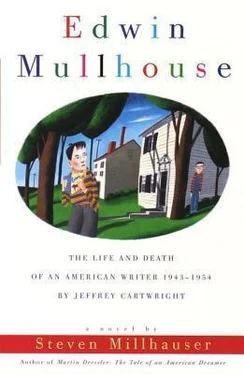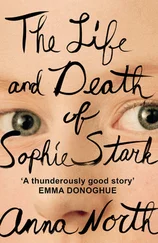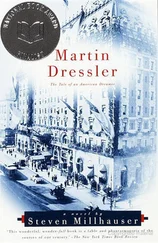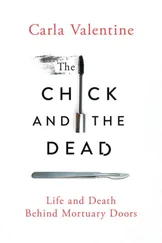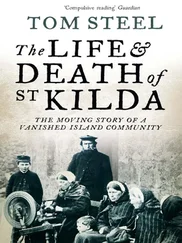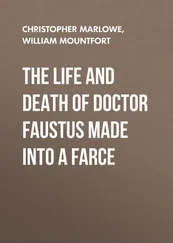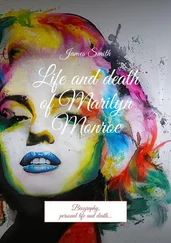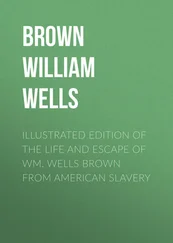So much for the cartoon titles. The single most important influence of the animated cartoon upon Edwin’s masterpiece — an influence that I shall discuss in a later chapter — is the cartoon image. Here I wish only to mention that the first direct use of images drawn from cartoons was made by Edwin in a poem written at the end of the Middle Years, some three months after the death of Arnold Hasselstrom (July 11–15, to be exact). This poem may be considered the last of Edwin’s juvenilia or the first product of his literary maturity; at any rate it is the first motion in the long dance toward Cartoons. In it, for the first time, Edwin approaches a serious subject by means of comic and even ridiculous images, thereby producing a pale prefiguration of that elusive and absolutely original quality of his mature work that for the time being may be defined as a flickering combination of the grimace and grin. The poem is actually entitled “Cartoon” in one manuscript copy, although the single typed copy, which in Edwin’s usual practice represents the final version, is entitled “To A.H.” The version I reproduce below is that of the typed copy. Aside from its purely historical interest, and except (possibly) for the penultimate line, the poem is of absolutely no value. The scene is set not in cartoon-land, as the uninformed reader might suppose, but on Robin Hill Road, Newfield, where Edwin often walked of a summer afternoon on his way to the bakery for a loaf of sliced pumpernickel and a sugar cookie, and upon which he was fond of gazing at night from the dark window beside his pillow. The poem is a fitting if belated tribute to a dead friend, and a fitting but not, I hope, belated conclusion to Part Two of this darkening history.
To A.H.
Streetlamps, fellas, all in a row,
Like cartoon men with ideas in your heads,
Come walk in a loonytune night with me.
Changing, a stoplight blushes red
As the big-eyed moon looks winking down—
And blows out a star with a sudden sneeze.
A skeleton dressed in a tall silk hat
Chases a mailbox (rattling knees)
And mails a DEAD LETTER. Close-up, now:
My eyes show waves with sinking boats,
And terrified tears jump overboard
As the circle closes. That’s all, folks.
Part Three: The Late Years: (Aug. 2, 1952–Aug. 1, 1954)

TOWARD THE END OF SEPTEMBER a familiar change came over Edwin. Day after day from the middle of Row 1, I watched Edwin idling at the back of Row 4. Day after day I watched his gaze rise from the bright new pages of Earth and Sky or the faded pages of Many Lands, Many People to the clock or the flag or the piles of red dictionaries or the shiny blue map-cases hanging over the blackboard like rolled-up movie screens; and leaning his chin on his palm he would stare unseeing, minutes at a time. After school he walked home wearily, conversing in shrugs and sighs; and clutching the banister he dragged himself slowly, slowly, slowly up to his room.
It was painful for me to witness in Edwin this appalling repetition. Perhaps I had no business to interfere, perhaps in any case I could do nothing at all to help him, but I vowed, this time, to guard him against enchantment with all the means at my disposal. The source of the sorcery was not far to seek. There were four new girls in our class — Margaret Riley, Anna Maria DellaDonna, May Flowers, and Rose Black — and Edwin had maintained a suspicious silence about all of them. Margaret Riley was a thin nervous sickly girl whose big round eyes glittered in a little face the color of white paste. She looked as if she were dying of malnutrition. You could see the bone-bumps at the back of her neck, and you could see her shoulderblades sticking through the white sweater that she always wore over her pale dresses. From time to time she was racked by violent fits of coughing, during which her face became splotched with red. Anna Maria DellaDonna was a chubby bubbly girl with a bouncing black ponytail, black bangs, and eyes like black marbles. She was always collapsing into fits of the giggles, hunching up her shoulders and clapping a plump hand over a mouthful of shiny braces. As for May Flowers, she was the most artificial girl I have ever known. She resembled a wooden doll. A spot of red glowed at the center of each shiny cheek, her tiny rosebud mouth gleamed as if with varnish, and her shiny blue-black hair clung in tight little curls about her head. Her eyes, fringed with thick black lashes, were large, glassy, and piercing blue. One always imagined the lids closing with a soft click as the vast hand of her mother tipped her backward. Mrs. Flowers dressed her little daughter in a nice new outfit each day, slipping on the little white underpants and the little white undershirt, pulling down carefully over the shiny curls the red-and-white-checked cotton dress, fastening the shiny black belt with its silver buckle, slipping the little white socks over the polished feet, buckling the shiny black patent leather shoes, buttoning up the pretty navy blue coat with the gray fur collar, lifting her gently by the elbows past the little couch in the living room, past the little mantelpiece with the little candlesticks, past the little painting over the fireplace and up through the open ceiling into the sky; and swinging her through the blue, at last she set her down gently on the playground, leaning her carefully against the wire fence. And really she was an extraordinary doll, for she could not only close her eyes, cry, and wet her pants, she could also smile, talk, hum, cheat, and dream. She was smart enough in her shiny wooden way, and read aloud fluently in a bright sharp rapid aggressive voice. What a contrast to Rose Black, who was also in the top reading group but read in a fluent murmur. She was a homely, dusky, boyish girl with a large nose and a long serious mouth. She wore long drab dresses that must have belonged to an older sister, and scuffed brown shoes with worn-down heels. She kept to herself, though not defiantly; you sensed in her a relaxed self-dependence, as if she were used to being alone and rather enjoyed it. This in itself was cause for concern, for Edwin in the past had always been attracted to lone wolves and witches. But even more suspicious was her name: that eerie repetition caused her to possess quite helplessly an unpleasant fascination, as if she had donned the old red dress of dead Rose Dorn. Sometimes, at certain angles, in certain shadows, I even fancied a distinct resemblance between them, as if Rose Black were an older, duller, duskier, dustier rose; a faded rose; a rose come back from the dead. And I recall with a shudder a certain morning when I saw her standing by herself near the brick wall in back: a shabby black cat was rubbing against her leg. I turned to Edwin, but he was watching a couple of black-jacketed blond hoodlums with white eagles on their backs.
Of course it was hopeless to try and learn from shy sly Edwin whether he had succumbed to the charms of Margaret Riley, or Anna Maria DellaDonna, or May Flowers, or Rose Black. And so I began to observe all four of them with an attention none of them deserved. I even went through the motions, on four successive occasions, of striking up an acquaintance I did not desire and later could not disown. I noticed at once that of the four only May Flowers actively pursued Edwin, poking at him with her bright sharp voice and fluttering her thick lashes whenever he came within ten feet of her. But I twice caught Margaret Riley staring furtively at Edwin from her seat beside him; and Anna Maria DellaDonna regularly collapsed into giggles, hunching up her shoulders and clapping a plump hand over her shiny braces, whenever Edwin uttered the faintest, most forlorn witticism. Only Rose Black displayed no interest in him whatsoever. Edwin himself, worsening daily, was careful to treat all four girls with the same gloomy, witty politeness; and everyone else, for that matter.
Читать дальше
